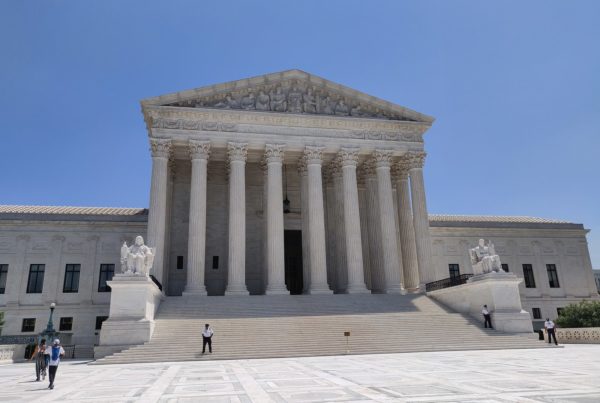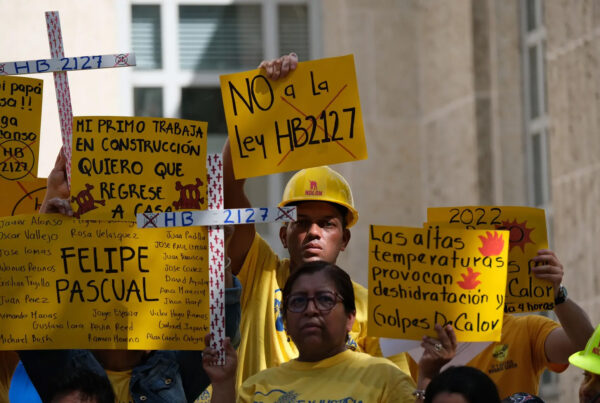Texas’ stubborn heat dome is still making for a very uncomfortable summer across the state.
Daytime highs will once again be in the triple digits for much of this week, with the National Weather Service issuing advisories about the risk of heat-related illness and air quality issues.
For many Texans, that means taking refuge in the air conditioning for most of the day. But the power for the AC has got to come from somewhere. So how is the Texas grid – and the energy industry – handling this heat wave?
Matt Smith, lead oil analyst for the Americas at Kpler, spoke with the Standard about how energy infrastructure is holding up. Listen to the interview above or read the transcript below.
This transcript has been edited lightly for clarity:
Texas Standard: So the National Weather Service is issuing warnings about potentially deadly high temperatures across the U.S. set to affect more than 110 million people. From your understanding, how is the Texas grid holding up in this withering heat?
Matt Smith: It’s holding up pretty well by all accounts.
So ERCOT, the agency that operates Texas’ power grid, is forecasting multiple days of record breaking energy demand. That’s obviously a result of the high temperatures that are being seen across the state.
But it is able to combat them. And so the agency, even though it has not forecasted that demand would get this high, they’re still looking at expecting to have things operating as usual.
Well, of course, that’s the supply part of the equation. It’s the demand part that I think that a lot of folks are worried about. You know, something that has always struck me as odd is that Texas is ranked as one of the least expensive when it comes to energy. You were mentioning how much energy Texas produces. Is it supply being what it is? Or what accounts for the relatively and comparatively low expenses when it comes to energy production?
There was a report out by WalletHub and they put Texas as the third least energy expensive state in the US. So what they did was they used an equation that factored in the average monthly consumption of electricity, natural gas, heating oil and fuel, as well as the average prices of those types of energy. And for Texas, you know, cheap natural gas in the state has a very positive influence on the ranking, as does the fact that Texas leads the nation in terms of oil production, has the most refineries and the most refining capacity.
We talked previously about how nearly half of Texas’s energy consumption comes from the industrial sector. But not surprisingly, Texas is the highest energy consumer in the nation across all sectors. Nearly a quarter of the energy consumed by the industrial sector across the U.S. is consumed in Texas.
So bottom line here: huge amounts of demand from Texas, but also a huge amount of supply in terms of the fuels needed to keep the lights on, essentially.
I heard recently the U.S. Department of Energy is providing funds to Texas to help out with the increasing burden. Is that right?
Yes. So the Texas Division of Energy Management will receive over $60 million from the federal government to help utilities essentially strengthen infrastructure for the state’s electricity grid.
So the Department of Energy recently announced they’ll award the funds so the Texas power grid can withstand extreme weather events, which is something that Texas has experienced in recent years here. And so those funds can go towards a wide variety of programs, as simple as trimming trees around power lines or improving how equipment functions in extreme heat or cold, for example.
You know, there’s an interesting article from the BBC recently about how Texas is racing to thwart the heat, sort of amplifying the fact that Texas is in the crosshairs here. Could you explain what you understand about proactive measures being taken in Texas to try to reduce the dangerous impacts of overheating?
Sure. Two things.
So first of all, the article discussed cooling measures being implemented, such as planting trees in urban areas or installing green roofs and walls, which is essentially putting plants and foliage on roofs and walls. Also, painting streets and sidewalks with cool pavement coating, or cool sidewalk coating.
The second thing, which was a key element in this article, is the need to address historic inequalities, as well.
Research has shown that there’s significant disparities between the temperatures encountered by Black and white urban residents. And that’s not just a Texas thing. That’s across the U.S.
And so I’ll leave you with this stat: historically, these red-lined communities have as much as 20% less tree cover than neighborhoods that haven’t faced racial discrimination. So something that can simply be helped out by planting trees here. So a number of ways these issues can be tackled.














